Choose Your Own Adventure Calculus
The rule of three suggests that if you encounter the same pattern for the third time in your code, you should refactor it into a reusable abstraction. The same thing applies in programming language theory. When you find that you are doing the same thing for the third time, it is probably a good idea to stop and think - is there a general pattern?

Figure 1. Auto-completion list showing possible operations in The Gamma
In my PhD thesis on context-aware computations, I did exactly this. When we realised that liveness analysis, resource tracking and checking of data-flow computations all require type system with similar structure, we came up with the idea of coeffects, which is an abstraction that can capture all three (and so, you only need to add one mechanism for tracking context into your language).
Recently, the same thing happened to me again. A lot of my work has been around interaction with programming systems. I am interested in looking not just at the programming languages, but also the stateful, interactive systems they are part of - and how programs are created through interactive editor tools, gradually revised in notebook systems or how proofs are created in interactive proof assistants. And interestingly, in three recent collaborations around those ideas, we ended up finding a very similar pattern.
In multiple different systems, we encountered a pattern where the programming system iteratively offers the user (programmer, data scientist, proof theoretician) a choice of options that the user can choose from to construct or refine their program (see Figure 1). In all systems, the user can also edit the code in other ways, but a lot (sometimes everything!) can be done just by choosing options.
I now have three examples, so it is time to describe the general pattern. Earlier, we called this (jokingly) dot-driven development, (seriously) AI assistants and (foolishly) iterative prompting. For the lack of a better name, I will refer to the abstraction as the choose-your-own-adventure calculus.
Published: Sunday, 2 February 2025, 2:52 PM
Tags:
research, academic, programming languages, thegamma, type providers
Read the complete article
What can routers at Centre Pompidou teach us about software evolution?
Back in June, I was in Paris for the NewCrafts conference to talk about the growing opacity of software systems. This was fun, partly because NewCrafts is a fantastic conference (you can already get your tickets for 2024!) and also partly because my talk (arguing against many established "good engineering" practices) was in many ways arguing for the exact opposite than one of the keynotes, leading to many interesting conversations.
While in Paris, I also visited the famous Centre Pompidou. Perhaps to the dismay of many modern art lovers, I spent a lot of time staring at the ceiling looking for routers.



Spot the routers at Centre Pompidou!
Published: Thursday, 7 December 2023, 6:30 PM
Tags:
research, academic, programming languages, design, architecture
Read the complete article
Where programs live? Vague spaces and software systems
Architecture and urban planning have been a useful source of ideas for thinking about programming. I have written various blog posts and a paper Programming as Architecture, Design, and Urban Planning that argue why and explore some of those ideas. Like urban planning and architecture, the design of any interesting software system deals with complex problems that can rarely be analysed in full and with structures that will continue to evolve in unexpected ways after they are created.
My most recent reading on cities was a book The City Inside Out (Czech only, unfortunately) that explore places referred to as terrain vague. This term refers to unused and abandoned spaces that have lost their purpose or do not have a clear use, but are used in various ways nevertheless. For various historical reasons, there seem to be quite a few of such places in Prague (Figure 1) and, more generally, Central European cities, which is the focus of the book.
The book is an interesting inspiration for thinking about programming in many ways. It uses an inter-disciplinary approach ranging from history and philosophy to archaeobotany, which is much needed for thinking about programming too. (Not archeobotany, but inter-disciplinary thinking certainly!) More specifically, it makes you think about the concept of a space in which cities and programs exist, how the spaces inhabited by the two differ, what would it look like if they were different and what structures get created in those spaces as a result of social and technical forces.

Figure 1. Nákladové nádraží (freight railway station) Žižkov - an example of a large
space in Prague that no longer serves its original purpose (photo source)
Published: Friday, 10 February 2023, 11:44 PM
Tags:
research, academic, programming languages, design, architecture
Read the complete article
The Timeless Way of Programming
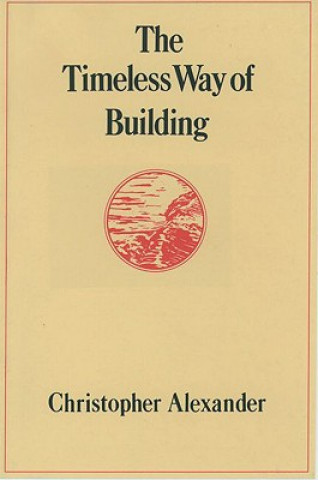
Figure 1. The Timeless Way of Building - Christopher Alexander
Many programmers know the name of the architect Christopher Alexander for his work on design patterns that has been adapted into the world of programming. A lot of people know of the, sometimes ridiculed, patterns like strategy (functions!) or visitor (pattern matching!) and some have read the Gang of Four design patterns book that introduced them. A few people know of the Patterns of Software book by Richard P. Gabriel, which is a much more profound reflection on software inspired by the work of Christopher Alexander. And almost nobody has actually read Christopher Alexander's books. (Thanks in advance for reminding me on Twitter that I am mistaken...)
I read Alexander's Notes on the Synthesis of Form a couple of years ago, and used it as one of the sources for ideas in my recent Onward! essay on architecture, design and urban planning, but I did not know his other work. Only recently, after Christopher Alexander died, I finally ordered two books that are most directly about design patterns, The Timeless Way of Building and A Pattern Language.
This post is a somewhat unorganized collection of thoughts triggered by reading of The Timeless Way of Building, including my understanding of Alexander's work, some critical thoughts and on the applications of his ideas to software.
Published: Thursday, 1 September 2022, 2:03 AM
Tags:
academic, research, programming languages, architecture, design
Read the complete article
No-code, no thought? Substrates for simple programming for all
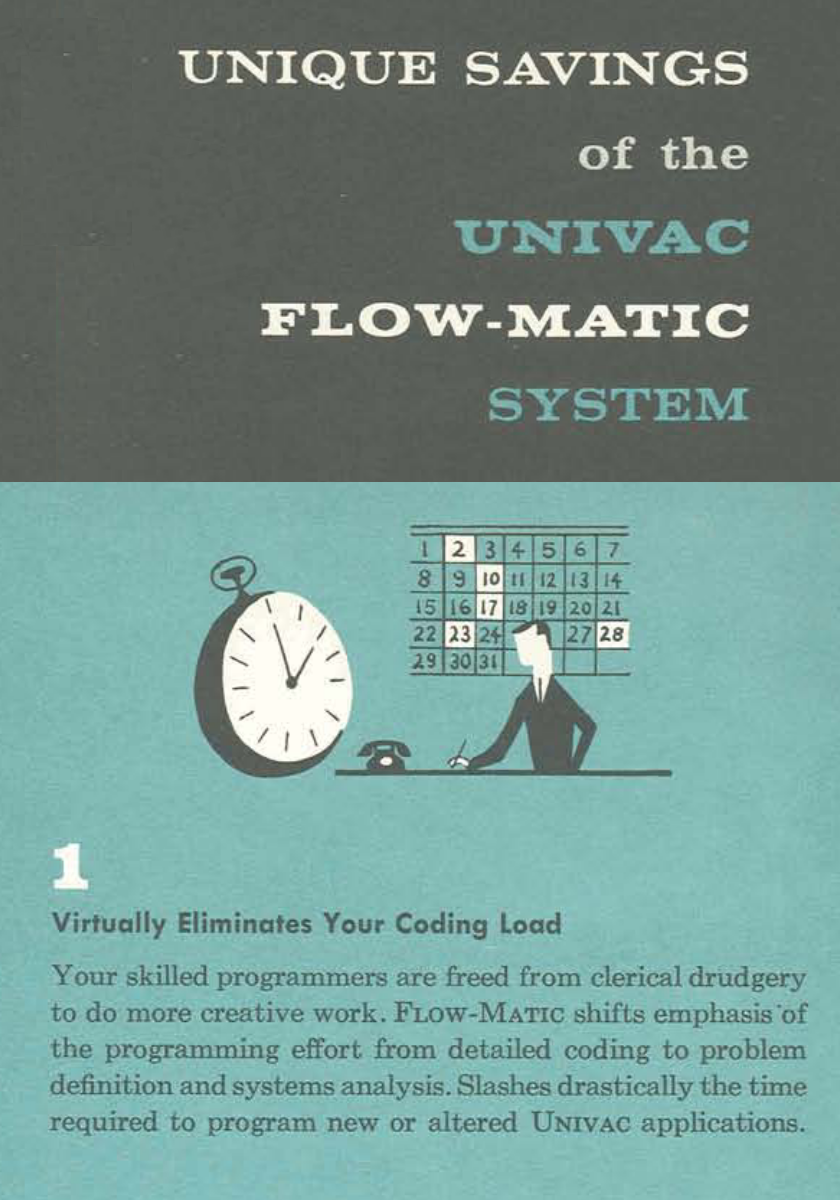
Figure 1. Virtually eliminates your coding load. FLOW-MATIC promotional brochure (1957)
No-code is a hot new topic for programming startups. The idea is to develop a system that allows end-users to do the programming they need without the difficult task of writing code. There are no-code systems for building mobile apps, analysing data and many more.
It is perhaps not a surprise that "eliminating programming load" is not as new idea as some people may think and there is an excellent blog series on no-code history by Instadeq, going back to 1959.
Funnily enough, the 1957 promotional brochure about FLOW-MATIC, a predecessor to COBOL created by Grace Hopper, uses almost the same language that you will find in startup pitch decks today (Figure 1). Of course, in 1957, coding referred to the tedious process of transcribing the desired program to low-level assembler or (more often) directly to machine code and "virtually eliminating your coding load" meant having a symbolic high-level programming language so easy that a reasonably skilled mathematician would be able to use it.
So, is there really anything new about no-code systems? Is it really possible to "eliminate your programming load"? And what would it really take to make some real progress in that direction?
Published: Thursday, 28 April 2022, 11:37 AM
Tags:
academic, research, programming languages
Read the complete article
Pop-up from Hell: On the growing opacity of web programs
I started to learn how to program in high school at the end of the 1990s using a mix of BASIC, Turbo Pascal and HTML with JavaScript. The seed for this blog post comes from my experience with learning how to program in JavaScript, without having much guidance or organized resources. This article continues a theme that I started in my interactive Commodore 64 article, which is to look at past programming systems and see what interesting past ideas have been lost in contemporary systems. Unlike with Commodore 64, which I first used in 2018 in the Seattle Living Computers museum, my perspective on the Early Web may be biased by personal experience. I will do my best to not make this post sound like a grumbling of an old nerd! (I thought this only comes later, but I may have been wrong...)
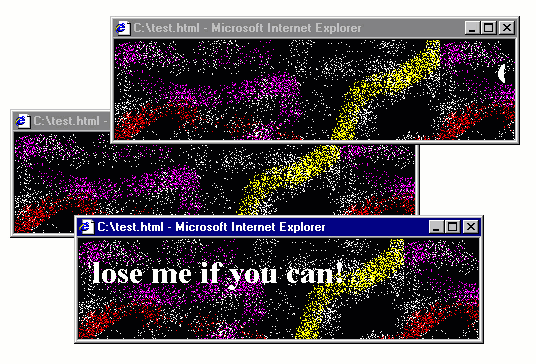
The 1990s, the web had a fair amount of quirky web pages, often created just for fun. The GeoCities hosting service, which has partly been archived is a witness of this and there are even academic books, such as Dot-Com Design documenting this history.
Some of the quirky things that you could do with JavaScript included creating roll-over effects (making an image change when mouse pointer is over it), creating an animation that follows the cursor as it moves and, of course, annoying the users with all sorts of pop-up windows for both entertaining and advertising purposes. Annoying pop-ups will be the starting point for my blog post, but I'll be using those to make a more general and interesting point about how programs evolve to become more opaque.
This blog post is based on a talk Popup from hell: Reflections on the most annoying 1990s program that I did recently at an (in person!) meeting of the PROGRAMme project. Thanks to everyone who attended for lively discussion and useful feedback!
Published: Friday, 8 October 2021, 1:14 PM
Tags:
academic, research, web, philosophy, talks
Read the complete article
Software designers, not engineers: An interview from alternative universe
While the physicists investigate the nature of the mysterious portal that has recently appeared in North London, several human beings recently came through the portal, which appears to be a gate into an alternative universe. As we understood from the last two people coming through the portal, it seems to be a linked with a universe that is in many ways like ours, reached about the same level of social and technological development, but differs in numerous curious details. The paths through which people in this alternative universe reached similar results as our world are often subtly different.
The most recent visitor from the alternative universe is Ms Zaha Atkinson, who would most likely be titled software engineer in our world, although the title she uses in her home world is software designer. She is a well-known software designer and has been also titled using the strange-sounding title softwarenova, a label that we will soon say more about. As with other technological and societal developments, the alternative universe seems to have arrived at very similar results as our worlds. Software is eating the (alternative) world, but it is built in very different ways. The interview with Ms Zaha Atkinson, presented below, reveals how very different the world of software is when we think of programmers as software designers rather than as software engineers.
This article is a work of fiction. Any resemblance to actual events or persons, living or dead, may or may not be entirely coincidental. It has been largely inspired by the book Designerly Ways of Knowing by Nigel Cross. Ms Zaha Atkinson also may or may not be entirely fictional.
Published: Monday, 19 April 2021, 2:30 PM
Tags:
academic, research, design, philosophy, architecture
Read the complete article
Data exploration calculus: Capturing the essence of exploratory data scripting
Most real-world programming languages are too complex to be studied using formal methods. For this reason, academics often work with simple theoretical languages instead. The λ-calculus is a simple formal language that is often used for talking about functional languages, the π-calculus is a model of concurrent programming and there is an entire book, A Theory of Objects modelling various object-oriented systems.

Animation from Financial Times article "Why the world's recycling system stopped working".
Those calculi try to capture the most interesting aspect of the programming language. This is function application in functional programming, sending of messages in concurrent programming and object construction with inheritance in object-oriented programming.
Recently, I have been working on programming tools for data exploration. In particular, I'm interested in the kind of programming that journalists need to do when they work with data. A good example is the coding done for the Why the world's recycling system stopped working article by Financial Times, which is available on GitHub.
Although data journalists and other data scientists use regular programming languages like Python, the kind of code they write is very different from the kind of code you need to write when building a library or a web application in Python.
In a paper Foundations of a live data exploration environment that was published in February 2020 in the open access Programming Journal, I wanted to talk about some interesting work that I've been doing on live previews in The Gamma. For this, I needed a small model of my programming language.
In the end the most interesting aspect of the paper is the definition of the data exploration calculus, a small programming language that captures the kind of code that data scientists write to explore data. This looks quite different from, say, a λ-calculus and π-calculus. It should be interesting not only if you're planning to do theoretical programming language research about data scripting, but also because it captures some of the atypical properties of the programs that data scientists write...
Published: Tuesday, 21 April 2020, 3:42 PM
Tags:
academic, research, programming languages, thegamma, data science
Read the complete article
On architecture, urban planning and software construction
Despite having the term science in its name, it is not always clear what kind of discipline computer science actually is. Research on programming is sometimes like science, sometimes like mathematics, sometimes like engineering, sometimes like design and sometimes like art. It also has a long tradition of importing ideas from a wide range of other disciplines.
In this article, I will look at ideas from architecture and urban planning. Architecture has already been an inspiration for design patterns, although some would say that we did quite poor job and imported a trivialized (and not very useful) version of the idea. However, there are many other interesting ideas in architecture and urban planning worth exploring.

To explain why learning from architecture and urban planning is a good idea, I will first discuss similarities between problems solved by architects or urban planners and programmers. I will then look at a number of concrete ideas that we can learn, mostly taking inspiration from four books that I've read recently. There are two general areas:
-
First, writing about architecture and urban planning often uses interesting methodologies that research on programming could adopt to gain new insights into systems, programming and its problems.
-
Second, there are a number of more concrete ideas in architecture and urban planning that might directly apply to software. For example, can programmers learn how to deal with complexity of software by looking at how urban planners deal with the complexity of cities? Or, can we learn about software maintenance by looking at how buildings evolve in time?
The nature of problems that programmers face are often more similar to the problems that architects and urban planners have to deal with than, say, the problems that scientists, engineers or mathematicians need to solve. We might not want to go all the way and completely rebuild how we do programming to mirror architecture and urban planning, but treating the ideas from those disciplines as equal to those from science or engineering will make programming richer and more productive discipline.
Published: Wednesday, 8 April 2020, 12:13 AM
Tags:
academic, programming languages, philosophy, design, architecture
Read the complete article
What to teach as the first programming language and why
The number of Google search results for the phrase "choosing the first programming language" at the time of writing is 15,800. This illustrates just how debated the issue of choosing the first programming language is. In this blog post, I will not actually try to answer the question posed in the title of the post. I will not discuss what language we should teach as the first one. Instead, I will look at a more interesting question.
I will investigate the arguments that are used in favour of or against particular programming languages in computer science curriculum. I am more interested in the kind of argumentation that is employed to support a particular choice than in the specific languages involved. This approach is valuable for two reasons. First, by looking at the argumentation used, we can learn what educators consider important about computer science. Second, understanding the motivations behind different arguments allows us to make our own debates about the choice of a programming language more informed.
The scope of this blog post is limited to the choice of the first programming language taught in an undergraduate computer science programmes at universities. This means that I will not discuss other important contexts such as choices at a primary or a secondary education level, choices for independent learners and choices in other university degrees that might involve programming.
Note that this blog post is adapted from an essay that I wrote as part of a Postgrduate Certificate for Higher Education programme at University of Kent, so it assumes less knowledge about programming than a typical reader of my blog has. This makes it accessible to a broader audience thinking about education though!
Published: Monday, 2 December 2019, 5:48 PM
Tags:
functional, research, academic, programming languages, philosophy, writing
Read the complete article
What should a Software Engineering course look like?
When I joined the School of Computing at the University of Kent, I was asked what subjects I wanted to teach. One of the topics I chose was Software Engineering. I spent quite a lot of time reading about the history of software engineering when working on my paper on programming errors and I go to a fair number of professional programming conferences, so I thought I can come up with a good way of teaching it! Yet, I was not quite sure how to go about it or even what software engineering actually means.
In this blog post, I share my thought process on deciding what to cover in my Software Engineering module and also a rough list of topics. The introduction explaining why I chose these and how I structure them is perhaps more important than the list itself, but it is fairly long, so if you just want to see a list you can skip ahead to Section 2 (but please read the introduction if you want to comment on the list!) I also add a brief reflection on why I think this is a good approach, referencing a couple of ideas from philosophy of science in Section 3.
Published: Friday, 8 February 2019, 12:22 PM
Tags:
academic, teaching, philosophy
Read the complete article
Programming as interaction: A new perspective for programming language research
In May, I joined the School of Computing at the University of Kent as a Lecturer (equivalent of Assistant Professor in some other countries). When applying for the job, I spent a lot of time thinking about how to best explain the kind of research that I would like to do. This blog post is a brief summary of my ideas. I'm interested in way too many things, including philosophy and design and data journalism, but this post will be mainly about programming language research. After all, I'm a member of the Programming Languages and Systems group!

Unlike some of my other posts about programming languages, I won't try to convince you that we should be studying programming languages completely differently this time. Instead, I want to describe one simple trick that will make current programming language research much more interesting!
A lot of programming language papers today talk about programs and program properties. In statically typed programming languages, we can check that a program \(e\) has certain type \(\tau\), which means that, when the program is run, it will only produce values of the type. This is very nice, but it misses a fundamental thing about programming. How was this program \(e\) actually constructed?
When programming, you spend most of your time working with programs that are unfinished. This means that they do not do what they are supposed to be (eventually) doing and, very often, they are not well-typed or even syntactically invalid. However, that does not mean that we can afford to ignore them. In many cases, programmers can even run those programs (using REPL or using a notebook environment). In other words, programming language research should not study programs, but should instead study programming!
I'm also writing this because I'll soon be looking for collaborators and PhD students, so if the ideas in this blog post sound interesting to you or if you've been working on something related, please let me know! You can get in touch at @tomaspetricek or email tomas@tomasp.net.
We'll have funding for PhD students from September 2019 and I'm also working on getting money for a post-doc position. All of these are open ended, so if the blog post made you curious (and you wouldn't mind living in Canterbury or London), definitely reach out!
Published: Monday, 8 October 2018, 1:22 PM
Tags:
academic, research, programming languages, data science
Read the complete article
Would aliens understand lambda calculus?
Unless you are a sci-fi author or some secret government agency, the question whether aliens would understand lambda calculus is probably not your main practical concern. However, the question is intriguing because it nicely vividly formulates a fundamental question about our formal mathematical knowledge. Are mathematical theories and results about them invented, i.e. constructed by humans, or discovered, i.e. are they eternal truths that exist regardless of whether there are humans to know them?

The question makes for a fantastic late night pub debate, but how can we go about answering it using a more serious methodology? Is there a paper one can read to better understand the problem? Occasionally, a talk or an online comment by a computer scientist comments on this question, but way too often, people miss the fact that the nature of mathematical entities is one of the fundamental questions of philosophy of mathematics. Alas, all those discussions are carefully hidden in the humanities department!
I believe that knowing a bit about philosophy of mathematics is important if we want to have a meaningful debate about philosophical questions of mathematics (sic!) and so I did a talk on this very subject at CodeMesh 2017. This article is slightly refined and hopefully more polished version of the talk for those who, like me, prefer reading over watching. Keep in mind that the question about the nature of mathematical entities is one of the fundamental questions of an entire academic discipline. As such, this article cannot possibly cover all the relevant discussions. Compared to some other writings in this space, this article is, at least, based on a couple of philosophical books that, I believe, have useful things to say on the subject!
Published: Tuesday, 22 May 2018, 11:27 AM
Tags:
academic, research, programming languages, philosophy
Read the complete article
The design side of programming language design
The word "design" is often used when talking about programming languages. In fact, it even made it into the name of one of the most prestigious academic programming conferences, Programming Language Design and Implementation (PLDI). Yet, it is almost impossible to come across a paper about programming languages that uses design methods to study its subject. We intuitively feel that "design" is an important aspect of programming languages, but we never found a way to talk about it and instead treat programming languages as mathematical puzzles or as engineering problems.
This is a shame. Applying design thinking, in the sense used in applied arts, can let us talk about, explore and answer important questions about programming languages that are ignored when we limit ourselves to mathematical or engineering methods. I think the programming language community is, perhaps unconsciously, aware of this - one of the reviews of my recent PLDI paper said "this is a nice, novel design paper, and the community often wants more design papers in our conferences". The problem is that we we do not know how to write and evaluate work that follows design methodology.
To better understand how design works, I recently read The Philosophy of Design by Glenn Parsons. The book perhaps did not answer many of my questions about design, but it did give me a number of ideas about what design is, what questions it can explore and how those could be relevant for the study of programming languages...
Published: Tuesday, 12 September 2017, 6:42 PM
Tags:
academic, research, programming languages, philosophy, design
Read the complete article
Papers we Scrutinize: How to critically read papers
As someone who enjoys being at the intersection of the academic world and the world of industry, I'm very happy to see any attempts at bridging this harmful gap. For this reason, it is great to see that more people are interested in reading academic papers and that initiatives like Papers We Love are there to help.
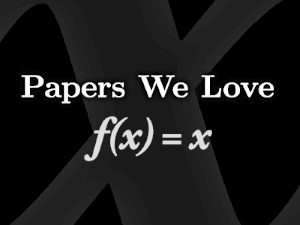
There is one caveat with academic papers though. It is very easy to see academic papers as containing eternal and unquestionable truths, rather than as something that the reader should actively interact with. I recently remarked about this saying that "reading papers" is too passive. I also mentioned one way of doing more than just "reading", which is to write "critical reviews" – something that we recently tried to do at the Salon des Refusés workshop. In this post, I would like to expand my remark.
First of all, it is very easy to miss the context in which papers are written. The life of an academic paper is not complete after it is published. Instead, it continues living its own life – people refer to it in various contexts, give different meanings to entities that appear in the paper and may "love" different parts of the paper than the author. This also means that there are different ways of reading papers. You can try to reconstruct the original historical context, read it according to the current main-stream interpretation or see it as an inspiration for your own ideas.
I suspect that many people, both in academia and outside, read papers without worrying about how they are reading them. You can certainly "do science" or "read papers" without reflecting on the process. That said, I think the philosophical reflection is important if we do not want to get stuck in local maxima.
Published: Wednesday, 12 April 2017, 3:05 PM
Tags:
academic, programming languages, philosophy
Read the complete article
The mythology of programming language ideas
If you read a about the history of science, you will no doubt be astonished by some of the amazing theories that people used to believe. I recently finished reading The Invention of Science by David Wootton, which documents many of them (and is well worth reading, not just because of this!) For example, did you know that if you put garlic on a magnet, the magnet will stop working? Fortunately, you can recover the magnet by smearing goats blood on it. Giambattista della Porta tested this and concluded that it was false, but Alexander Ross argued that our garlic is perhaps not so vigorous as those of ancient Greeks.
You can just laugh at these stories, but they can serve as interesting lessons for any scientist. The lesson, however, is not the obvious one. Academics will sometimes read those stories and use them to argue against something they do not consider scientific - arguing that it is like believing that garlic break magnets.
This is not how the analogy works. What is amazing about the old stories is that the conclusions that now seem funny often had very solid reasoning behind them. If you believed in the basic assumption of the time, then you could reach the same conclusions by following fairly sound reasoning principles. In other words, the amazing theories were scientific and entirely reasonable. The lesson is that what seems a completely reasonable idea now, may turn out to be wrong and quite hilarious in retrospect.
In this article, I will look at a couple of amazing theories that people believed in the past and I will explain why they were reasonable given the way of thinking of the time. Along the way, I will explore some of the ways of thinking that we use today about programming and computer science and why they might appear silly in the future.
Published: Tuesday, 7 March 2017, 4:31 PM
Tags:
academic, programming languages, philosophy
Read the complete article
F# in MonoDevelop and cross-platform web sites & screencasts
About a week ago, I attended the F# in Education workshop in Boston. It was a great event with many interesting people around. I believe that the workshop was very exciting for everyone who is interested in F#, but uses Mac or Linux. The F# team recently made some effort to improve the F# support on Mono (meaning mainly Mac and Linux). The recent November 2010 CTP update contains several bugfixes that make it possible to use F# on Mono 2.8. Another great thing that happened at the workshop is the open source release of F# (see also blog post by Miguel with a post-check-in photo). At the workshop, I also announced my contribution to the cross-platform F# story, a project that I've been working on recently - the F# language binding for MonoDevelop.
I promised to make it available as soon as possible after the workshop. As usually, things take longer, than one would like, but I'm finally ready to announce the initial (beta) version of the plugin. The screenshot on the right shows some of the features of the F# language binding. As you can see, there is an F# Interactive tool window, syntax highlighting as well as IntelliSense auto-completion.
If you're interested in trying it out, here are links to the repository (you can use it to install the language binding from the MonoDevelop Add-ins manager) and source code. The F# plugin needs to be able to locate F# installation and it also requires more F# assemblies to be installed in the GAC, so you may as well want to read the instructions before trying it :-).
- Project homepage at the Functional Variations web site has more information about the project as well as detailed installation instructions.
- I also created a web page that contains information about installing F# on Mac and Linux which explains how to install F#, such that the MonoDevelop plugin can find it.
- The source code is available in the F# cross-platform packages and samples project at CodePlex
(under the Apache 2.0 license). You can find it in the
monodevelopsubdirectory. - Online repositiory with a MonoDevelop package is available at: http://functional-variations.net/addin.
(If you're a hacker, the easiest way to get it working is to addFSharp.Compiler*to GAC and setFSHARP_COMPILER_BINenvironment variable to F# installation location)
If you want to see some interesting uses of the F# MonoDevelop plugin, you can also watch
my
talk at the F# in Education event. In one demo, I used F# on Mac to play with a simple, composable
functional 3D library. In another example I demonstrated how to asynchronously process stock
prices on Linux. The last demo, showing my match! extension didn't work all that well, because
I had too many virtual machines running, but I'll blog about match! again sooner or later!
In addition to the F# plugin for MonoDevelop itself, I'd also like to mention two web sites that I've been working on and some interesting cross-platform F# screencasts...
Published: Tuesday, 16 November 2010, 2:35 AM
Tags:
academic, presentations, universe, mono, webcast, f#
Read the complete article
The Duality of Object and Event references
Mathematical duality [2] is a very useful and elegant concept that gives us a nice way of speaking about objects or structures that behave in some way exactly conversely. There is no clear definition of what duality is. However, the idea is that when we have two structures that behave conversely and we know that something is true about the first one, then we get the opposite statement about the other structure "for free" (if you know how to translate from one structure to the other).
In this article, I'll talk about an interesting example of duality that (to my best knowledge) wasn't described by anyone before. The two dual structures are references between objects in a normal program and references between events in a reactive application. The statement that is going to become obvious thanks to the duality principle is describing which of the objects (or events) are garbage and can be safely collected by garbage collector.
This topic is in much more details discussed in a paper [4] I wrote with Don Syme and that I presented at the ISMM Workshop (see also my trip report from PLDI). In this article, I'll try to give an accessible description of the most interesting idea from the paper...
Published: Monday, 19 July 2010, 4:58 PM
Tags:
academic, research
Read the complete article
PLDI 2010 Trip Report
In June, I attended my first "big" academic conference Programming Languages Design and Implementation (PLDI 2010) in Toronto. I attended the conference, because I presented a paper that I wrote with Don Syme as a result of my internship at Microsoft Research, but I'll write more about that shortly (and thanks to MSR for partly supporting my attendance at the conference!)
As far as I understand it, the focus of the conference is more on implementation. Many people believe that the current programming languages are good enough and we need to make sure that they run well (e.g. compilers optimize code to run better on multi-core) and that we need better tools for working with them (e.g. automatic verification of the code we write), so these areas were the main focus of the conference. However, there were some very interesting talks on the design of programming languages, which is an area that I personally find more interesting...
Published: Monday, 5 July 2010, 11:23 PM
Tags:
universe, academic, meta-programming
Read the complete article
Using custom grouping operators in LINQ
You can use LINQ to write queries that perform grouping of data using group by
or ordering of data using orderby clause. LINQ provides the default
(and the most common) implementation of both of the operations, but sometimes you
may need a slightly different behavior when grouping or ordering data (this article
is motivated by a question on StackOverflow
which needs to do exactly that for grouping).
Let's look at a simple example, which shows when we may need a different behavior when
grouping data. For example, we may have the following list of stock trades
containing a name of a stock and the price of the trade (stored for example as a list
of TradeInfo classes with properties Name and Price):
{ { Name = "MSFT", Price = 80.00 },
{ Name = "MSFT", Price = 70.00 },
{ Name = "GOOG", Price = 100.00 },
{ Name = "GOOG", Price = 200.00 },
{ Name = "GOOG", Price = 300.00 },
{ Name = "MSFT", Price = 30.00 },
{ Name = "MSFT", Price = 20.00 } }
Now, we may want to group adjacent trades into a single summary record which will contain the name of the stock (which is same for all trades in each group), the number of trades in the group and an average price in the group. The desired results are:
{ { Name = "MSFT", Count = 2, AvgPrice = 75.00 },
{ Name = "GOOG", Count = 3, AvgPrice = 200.00 },
{ Name = "MSFT", Count = 2, AvgPrice = 25.00 } }
The operation that we want to do is very similar to group by in LINQ, but
it doesn't do quite the same thing! If we used group by, we would get only
two groups as the result. However, as I wrote earlier, we want to group only
adjacent trades. You could write your own extension method to do this,
but then you need to leave the elegant LINQ query syntax. In this article, I'll show
you how to get the desired results using a simple LINQ query with a group by
clause...
Published: Sunday, 7 February 2010, 8:13 PM
Tags:
academic, c#, parallel
Read the complete article
Accelerator and F# (IV.): Composing computations with quotations
In this article series, we're talking about the Accelerator project and I'm
presenting an F# library that I implemented, which allows you to use Accelerator [references]
in a more sophisticated way. We've seen two examples of using Accelerator directly
(see also introduction and Game of Life).
In the previous article
I introduced my F# library for working with Accelerator. We've seen F# functions from the
DataParallel module, we implemented an algorithm that rotates an image
using these functions and finally, we've seen that we can take this ordinary F# code
and run it using Accelerator. This is all possible thanks to F# quotations, which
we can use to get an AST (a source code) of an F# function we wrote (if the function
is marked in some special way).

In this part of the series, we're going to look at working with quotations explicitly. We'll use meta-programming techniques to work with Accelerator. Meta-programming means writing programs that manipulate with other programs or pieces of code. This is exactly what we're going to do in this article. We'll write an F# function (running on CPU) that builds a program, which we'll then run using Accelerator.
This is quite interesting approach, which isn't possible when we call Accelerator methods as standard F# functions or .NET methods. The benefit is that we'll clearly see which parts of program run on CPU and what parts execute on GPU or using X64 multi-core target. We could also perform more complicated optimizations with the code (because this wouldn't affect the readability). Just for your reference, here is the list of articles in this series in case you missed some of them:
- Accelerator and F# (I.): Introduction and calculating PI
- Accelerator and F# (II.): The Game of Life on GPU
- Accelerator and F# (III.): Data-parallel programs using F# quotations
- Accelerator and F# (IV.): Composing computations with quotations
However, enough with theory and let's take a look at some code samples! This time, we'll implement blurring of an image (also called convolution). Another example how to write this in F# using Accelerator is Satnam Singh's blog post [4]. Our example will be different, because we'll write the code as standard F# program and then have it translated to Accelerator automatically using quotations. We'll also talk about the architecture of the library that we're using and look at some performance results.
Published: Tuesday, 12 January 2010, 3:20 AM
Tags:
functional, academic, meta-programming, accelerator, f#, math and numerics
Read the complete article
Accelerator and F# (III.): Data-parallel programs using F# quotations
If you've been following this article series, you already know that Accelerator is a MSR library [1, 2] that allows you to run code in parallel on either multi-core CPU or using shaders on GPU (see introduction). We also discussed a direct way to use Accelerator from F# (by calling Accelerator methods directly) and implemented Conway's Game of Life. In this article, we'll look at more sophisticated way of using Accelerator from F#. We'll introduce F# quotations and look at translating 'normal' F# code to use Accelerator.

In general, F# quotations allow us to treat F# code as data structure and manipulate with it. This is very similar to C# expression trees, but the F# implementation is more powerful. We can also mark a standard method or a function with a special attribute that tells the compiler to store quotation of the body. Then we can access the quotation and traverse it or modify it. In this article we'll use a function that takes an F# quotation (containing a limited set of functions) and executes it using MSR Accelerator. Implementing this functionality is a bit complicated, so we won't discuss the implementation now. We'll leave this for some future article of this series. In future, we'll also look at other interesting possibilities that we have when writing code using quotations. Here is a list of articles in this series and of the articles that I'm planning to add:
- Accelerator and F# (I.): Introduction and calculating PI
- Accelerator and F# (II.): The Game of Life on GPU
- Accelerator and F# (III.): Data-parallel programs using F# quotations
- Accelerator and F# (IV.): Composing computations with quotations
Published: Monday, 4 January 2010, 12:50 PM
Tags:
academic, functional, meta-programming, accelerator, f#, math and numerics
Read the complete article
Accelerator and F# (II.): The Game of Life on GPU
In the previous article, I introduced the Microsoft Research Accelerator library. It allows us to write computations with arrays in C# and execute them in parallel on multi-core CPU or more interestingly, using GPU shaders. In the previous artcile, we've seen how Accelerator works and how it can be accessed from F#. In this article, we'll look at one more interesting F# demo - we'll implement the famous Conway's Game of Life [1] using Accelerator. We'll use a v2 version of Accelerator which has been announced just recently and is available from Microsoft Connect [2].
This article is the second one from a series about using Accelerator from F#. Today, we'll use Accelerator types directly from F# - this is the simplest possible approach and is very similar to the way you'd work with Accelerator in C#. However, we can use some nice F# features such as custom operators to make the code more readable. In the next article, we'll discuss a different approach - we'll look how to execute more "standard" F# code (that doesn't reference Accelerator explicitly) with Accelerator using F# quotations. The list of articles may change, but here is a list of articles that I'm currently planning to write:
- Accelerator and F# (I.): Introduction and calculating PI
- Accelerator and F# (II.): The Game of Life on GPU
- Accelerator and F# (III.): Data-parallel programs using F# quotations
- Accelerator and F# (IV.): Composing computations with quotations
Published: Monday, 28 December 2009, 9:16 PM
Tags:
academic, functional, meta-programming, accelerator, f#, math and numerics
Read the complete article
Accelerator and F# (I.): Introduction and calculating PI
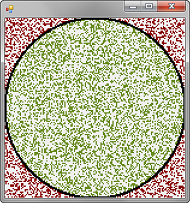
I already wrote about two projects that I worked on during an internship at MSR back in 2007 (ASP.NET support in F# and F# WebTools). Even though this was more than 2 years ago (and I did one more internship at MSR in the meantime), I still have one more project that I never published on the web. The folks from the F# team reminded me of this project recently, so I thought I could finally publish it. The project used Microsoft Research Accelerator [1, 2], which is a C# library for developing array-based computations and executing them on a GPU. More recently, the Accelerator team at MSR published Accelerator v2 [3], which was a good motivation to update my original project...
In this article, we'll look at the simplest way of using Accelerator from F#. Accelerator provides a managed interface that can be naturally used from both C# and F#. We can use a mix of method calls and overloaded operators to describe a computation. In F#, we'll also define our additional custom operators to make the code a bit nicer. After we introduce Accelerator using a simple C# demo, we'll look how to calculate an approximate value of the PI number using a Monte-Carlo method.
This article is the first one from a series about using Accelerator from F#. The list of articles may change, but here is a list of articles that I'm currently planning to write:
- Accelerator and F# (I.): Introduction and calculating PI
- Accelerator and F# (II.): The Game of Life on GPU
- Accelerator and F# (III.): Data-parallel programs using F# quotations
- Accelerator and F# (IV.): Composing computations with quotations
Published: Monday, 21 December 2009, 3:21 AM
Tags:
functional, academic, meta-programming, accelerator, f#, math and numerics
Read the complete article
Imperative computation in F# (I.) - Returning results from a function
One of the limitations of F# is that it doesn't very well support some of the
advanced imperative language constructs such as break, continue
or imperative style of returning value from a function, meaning that you can't write
something like return false in the middle of the function. This has
good reasons. F# doesn't in principle have the notion of currently executing statement
and instead treat every code you write as an expression. Clearly, when there is no
current statement, we cannot jump to other statements. If you're looking
for more information about these basic principles, you can take a look at my book
Real World Functional
Programming, which covers this distinction in details in chapter 2, but we'll look
at a brief example that will clarify this idea shortly.
Often, there is really no need to use break or other imperative constructs
in F#, because you can write the same thing more elegantly using one of the provided higher
order function such as Seq.exists or Seq.tryfind. However,
there are still some cases where the imperative programming style makes it easier
to express our original intention. Also, implementing your own higher order
functions (akin to Seq.exists) would sometimes be much easier if we
could just use imperative return.
So, what can be done about this?
Published: Thursday, 19 March 2009, 2:05 AM
Tags:
functional, academic, f#
Read the complete article
CLinq - LINQ support for the C++/CLI language
I started working on this project, because I attended C++ class at our university and I had to do some application in C++. Because I hate doing useless projects I wanted to work on something interesting and so I started thinking whether it would be possible to enable LINQ support in C++/CLI...
C++/CLI is a very flexible language and the following example proves that enabling LINQ support in C++/CLI isn't impossible. The following database query returns name of contact and company for all customers living in London:
// create connection to database
NorthwindData db(".. connection string ..");
// declare database query
Expr<Customers^> cvar = Var<Customers^>("c");
CQuery<String^>^ q = db.QCustomers
->Where(clq::fun(cvar, cvar.City == "London"))
->Select(clq::fun(cvar,
cvar.ContactName + Expr<String^>(", ") + cvar.CompanyName));
// execute query and output results
for each(String^ s in q->Query)
Console::WriteLine(s);
If you are interested in more information about CLinq project you can...
Published: Friday, 2 March 2007, 5:11 PM
Tags:
.net, academic, c#
Read the complete article
Concepts behind the C# 3.0 language
One of the lectures that I attended last year was Programming Methodology and Philosophy of Programming Languages. The lecture was mostly about history of programming languages and how several features evolved, disappeared and than after many years appeared again in another programming language.
As I final work I decided to write an article that describes ideas that influenced the design of the C# 3.0 language. Some of these features are known from functional languages (for example from LISP or Haskell), some other were developed at Microsoft Research and appeared in the F# language or Cω. I also wanted to show in what ways are these features limited in the C# 3.0. I think that thanks to these limitation, the C# 3.0 is still a simple (or at least not difficult) to understand which is very important for mainstream language, but I find it interesting to know what is possible in other (less limited) languages.
- You can also download the article in PDF (404kB)
- The article is also available at CodeProject.com
Published: Sunday, 15 October 2006, 3:19 PM
Tags:
c#, academic, functional, meta-programming
Read the complete article
Slides and demos from F# presentation
This semester I attended Advanced .NET Seminar that was led by Tomas Matousek [^] who is one of the authors of Phalanger project [^] (Which is an amazing project by the way. It takes PHP source code and compiles it without any modification to .NET). Seminar was mostly focused on Rotor and .NET internals, so if you want to learn more about these topics you can look at Advanced .NET programming [^] slides (by Tomas Matousek).
I did one presentation at this seminar too. It was about the F# language developed at Microsoft Research. It was just a quick overview of F# features, because F# is very rich topic, so it coveres only the language (functional vs. imperative behavior), F# type system, compilation of F# constructs to .NET and interoperability with .NET (for example how to create windows forms application in F#). At the end, I also mentioned F# meta-programming that allows you to look at F# code as data.
- The F# language (67kB) - presentation slides in PDF
- F# Samples (54kB) - zipped VS 2005 solution with samples
Published: Friday, 9 June 2006, 9:14 PM
Tags:
presentations, academic, universe, f#
Read the complete article



